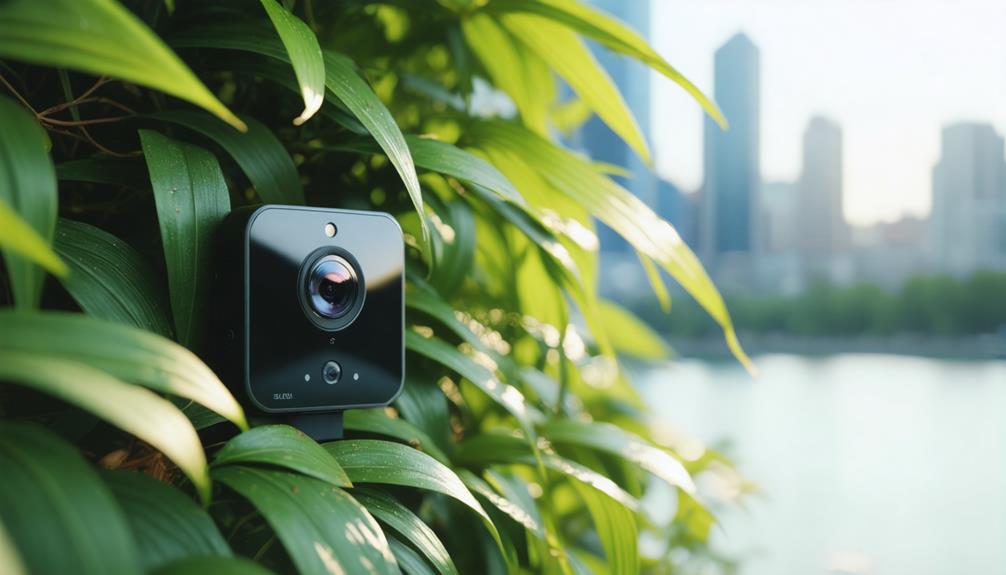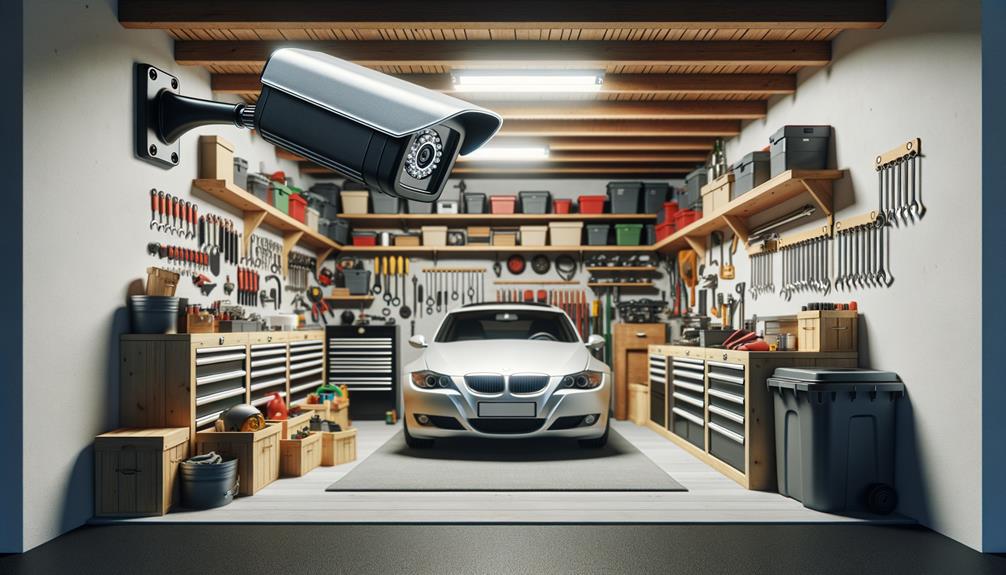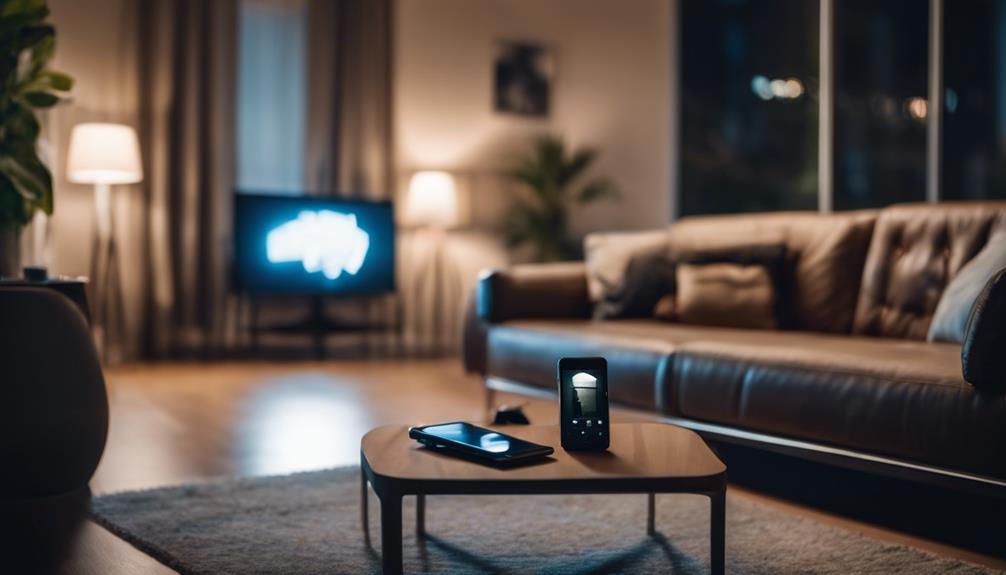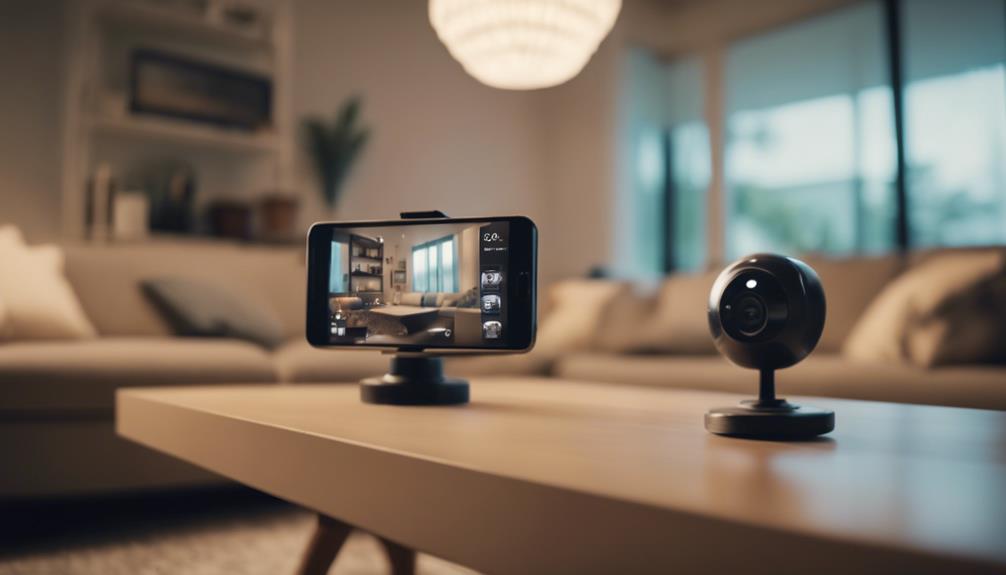
Brainstorm Security Shop

For Orders Over $199

On Any Of Our Products

Details On Refund Page
As a renter, you’re likely familiar with the limitations imposed on altering your living space, but that doesn’t mean you can’t secure your home effectively with a home security system. Wireless security systems offer a flexible, non-permanent solution that you can take with you if you move. These systems require minimal installation and won’t get you in trouble with your landlord. Whether it’s smart cameras, door enhancements, or motion detectors, the options are versatile and effective. But how do you choose which system is right for your specific needs, and what should you consider to ensure maximum security without breaching your rental agreement? Let’s explore the possibilities.
While homeowners often have the option to install permanent security systems, renters need flexible, non-invasive, and easily removable solutions that meet their security needs without violating lease terms. You’re likely facing restrictions against modifications that alter the physical structure of your rental, such as drilling holes or adding wired installations. This means you’ll need to look for security systems specifically designed with portability and minimal physical impact in mind.
As a renter, you also have to consider the transient nature of leasing. You mightn’t be in the same place for a long period, so investing in a system that’s easy to set up and take down when it’s time to move is crucial. It’s not just about finding a system that fits your current residence; it’s about having the flexibility to adapt to future homes as well.
Another key aspect is the management of these security systems. You’ll want something that doesn’t require long-term contracts or complex installations that could complicate your moving process. Opting for a security solution that provides adequate coverage without the permanence typically associated with traditional systems ensures you remain secure and compliant with your rental agreement.
Wireless security systems offer several advantages for renters, including easy installation and flexibility in moving locations. You’ll find they require minimal alterations to your living space, which is ideal if you’re not allowed to make permanent changes. There’s no need to drill holes or run cables through walls, making these systems a favorite among those who prefer less invasive options.
Besides ease of setup, wireless systems can be just as reliable as their wired counterparts. They use secure, encrypted signals to communicate between sensors and the control panel, reducing the risk of interference or hacking. You can also expand these systems easily. Adding extra sensors or cameras is straightforward, allowing you to customize your security setup as your needs change or as you move to a different apartment.
Moreover, many wireless systems offer smart home integration. You can connect them to your Wi-Fi and control them via a smartphone app. This feature lets you monitor your home remotely, receive real-time alerts, and even control other smart devices, all from your phone. Whether you’re at work or on vacation, you’ll have peace of mind knowing you can check in on your home with just a few taps.

Building on the flexibility of wireless systems, let’s explore various non-permanent security devices that renters can easily install and remove. You’ll find that these options don’t require any drilling or permanent changes to your living space, which is perfect when you’re renting.
Firstly, consider door and window sensors. These small devices attach to your entry points and alert you if they’re opened unexpectedly. They’re typically battery-operated and connect wirelessly to a central hub or your smartphone, making them easy to set up and remove without leaving a trace.
Next, there are motion detectors. These can be placed in corners of rooms or near entryways to monitor movement. When triggered, they send an alert to your phone or central system. Like the door and window sensors, they’re also easy to install with adhesives or temporary mounts.
Additionally, glass break sensors are a smart choice. These detect the frequency of breaking glass and trigger an alarm. This can be particularly useful if you’re concerned about someone breaking a window to gain entry.
Each of these devices offers a layer of security that’s both effective and adaptable to your needs as a renter, ensuring peace of mind without compromising your rental agreement.
Installing smart security cameras allows you to monitor your home remotely, offering both convenience and enhanced protection. These gadgets are a smart move, especially when you’re renting, because they can be easily set up and removed without damaging the property.
Firstly, choose cameras that suit your needs—whether indoor or outdoor models. Look for features like motion detection, night vision, and Wi-Fi connectivity. You’ll want to ensure the camera you select supports app integration, allowing you to view live feeds and receive alerts on your smartphone.
When setting them up, pick strategic locations. Inside, place cameras in common areas like the living room or hallways but respect privacy in sensitive areas like bathrooms and bedrooms. If you’re placing cameras outside, aim for views of entrances and exits but ensure they’re mounted under shelter to avoid weather damage.
Most smart cameras come with adhesive mounts or removable clips for easy installation. Follow the manufacturer’s instructions to connect them to your home Wi-Fi network. Once installed, test them to ensure they cover the desired areas and that you receive notifications correctly.
Through these steps, you’ll enhance your rental’s security without the need for permanent alterations.
After setting up smart security cameras, it’s time to focus on enhancing the security of your doors. First, consider installing a high-quality deadbolt. A sturdy deadbolt can make a significant difference in keeping your door secure against intruders. Look for one that’s pick-resistant and made of solid metal. Don’t forget to check with your landlord before making any permanent changes to ensure you’re complying with your lease terms.
Next, think about adding a door reinforcement kit. These kits can be installed on your existing door to make it harder to kick in. They usually come with metal plates that reinforce the door jamb, the hinges, and the area around the lock itself. It’s a practical investment that doesn’t usually require major alterations to the door.
For an added layer of security, consider a smart lock. These locks offer keyless entry options and can be controlled remotely via your smartphone. Many models also allow you to grant temporary access to visitors without providing a physical key, and they log entry times, which can be helpful in monitoring who comes and goes.
Lastly, don’t overlook a simple peephole or a digital viewer. Being able to see who’s at your door before opening it’s an essential safety measure.
Next, let’s consider how you can enhance your window security to complement your door upgrades. While your doors might now be fortified, ensuring your windows are equally secure is crucial.
First off, you’ve got to check the locks. Many windows come with relatively flimsy latches, but you can upgrade these to sturdier, keyed locks or even install additional sash locks for added safety.
Another option is to use window security film. This film adheres to your glass and makes it much harder to break, which can deter would-be intruders. It’s a great solution because it’s nearly invisible, yet it significantly strengthens the window.
If you’re on the ground floor or have accessible windows, consider installing window bars. They can be custom-made to match your décor and don’t necessarily have to look industrial. Some bars come with quick-release mechanisms, designed for easy removal in case of an emergency.
Lastly, think about adding window sensors. These can alert you if a window is tampered with or broken, providing an extra layer of security. Just make sure they’re compatible with any home security system you might already have or plan to install. This way, you’re not just protecting your windows, but enhancing your overall home security strategy.

Exploring motion detectors and alarms offers an effective way to enhance your home’s security by alerting you to any unexpected movement. As a renter, you’ll find that installing these devices can be straightforward and doesn’t usually require major modifications to the property.
Motion detectors use infrared or ultrasonic technology to sense when someone is moving in an area where there shouldn’t be activity. Once triggered, they can send an alert to your phone or set off an alarm to scare off intruders.
You should consider placing motion detectors in high-traffic areas such as near entry points and hallways. It’s important to position them out of reach to avoid tampering and ensure they cover the intended areas effectively. Some models offer pet immunity features, which prevent false alarms triggered by your pets moving around.
Additionally, integrating alarms with these detectors enhances their effectiveness. Alarms can be audible, like sirens, or silent, sending notifications directly to you or a monitoring service. You’ll want to choose an alarm volume that’s loud enough to deter an intruder but consider your neighbors and local noise regulations.
This combination of motion detectors and alarms provides a robust security layer that keeps you informed and ready to respond to potential threats, all without making permanent changes to your rental.
Integrating smart home devices can significantly elevate your rental’s security and convenience. By syncing devices like smart locks and lights, you’re not just making your life easier; you’re also adding a layer of security that adapts to your lifestyle.
Imagine you’re at work and unsure if you locked the door. With a smart lock, you can secure your door remotely using your smartphone. It’s that simple and stress-free.
Smart lighting can also deter burglars. You can set your lights to turn on and off in patterns that mimic your usual activity, making it look like someone’s always home. Plus, you can manage all these features through your phone, no matter where you are. It’s a perfect fit if you’re often out or travel frequently.
Additionally, integrating smart cameras provides real-time video surveillance accessible from your mobile device. Whether you want to check if your package has arrived or see who’s knocking, these cameras offer peace of mind with the push of a button.

When selecting a home security system, you’ll need to consider the type of connectivity that best suits your needs. There are several options available, each with its own set of advantages and limitations.
Wi-Fi is the most common choice, offering easy installation and control via smartphones. You’ll find that Wi-Fi-enabled systems are widely compatible with other smart devices, enhancing your overall home automation. However, keep in mind that Wi-Fi dependency means your system is only as reliable as your internet connection. If it goes down, so does your system’s functionality.
Cellular connectivity is another option, often considered more reliable than Wi-Fi because it doesn’t depend on a home internet connection. These systems use cellular networks to communicate alerts and are less susceptible to outages. The trade-off is typically a higher cost, both for the equipment and the monthly service fees.
Lastly, there’s landline connectivity, which uses your telephone line. This option can be less expensive and isn’t dependent on internet reliability, but it’s less flexible than the other types. Landline systems also risk being disabled if the phone lines are cut.
Choosing the right connectivity depends on balancing your security needs with your living situation and budget.

To effectively manage your home security from afar, ensure your system includes real-time alerts and remote access capabilities. These features let you monitor your apartment in real-time, so you’re always in the loop, no matter where you are. Look for systems that send you notifications for any unusual activities, like unexpected motion detected or doors opening when they shouldn’t.
Next, make sure you can access your security system via a smartphone app. This allows you to check live feeds from cameras, arm or disarm the system, and even control smart locks remotely. It’s like having a remote control for your home’s security in your pocket. Choose an app that’s user-friendly and highly rated for reliability and security.
Additionally, consider setting up automated scenarios that enhance your security without constant manual input. For instance, you could set your lights to turn on automatically if a camera detects motion after dark, simulating someone being at home.
Lastly, always keep your software updated. Updates often include security patches that protect against new threats. It’s a simple yet crucial step in keeping your remote monitoring effective and your home secure.
As a renter, you’ve got plenty of options to secure your home without breaking lease terms. Opt for wireless systems that are easy to set up and move with you. Invest in smart cameras, door enhancements, and motion detectors to beef up your security.
Remember, integrating smart devices can further streamline protection. Always choose systems offering remote monitoring for added peace of mind. With these tools, you’ll maintain safety and comply with your rental agreement effortlessly.

Brainstorm Security Shop
1867 Caravan Trail
Ste 105
Jacksonville, FL 32216
Call us toll free: (800) 859-5566